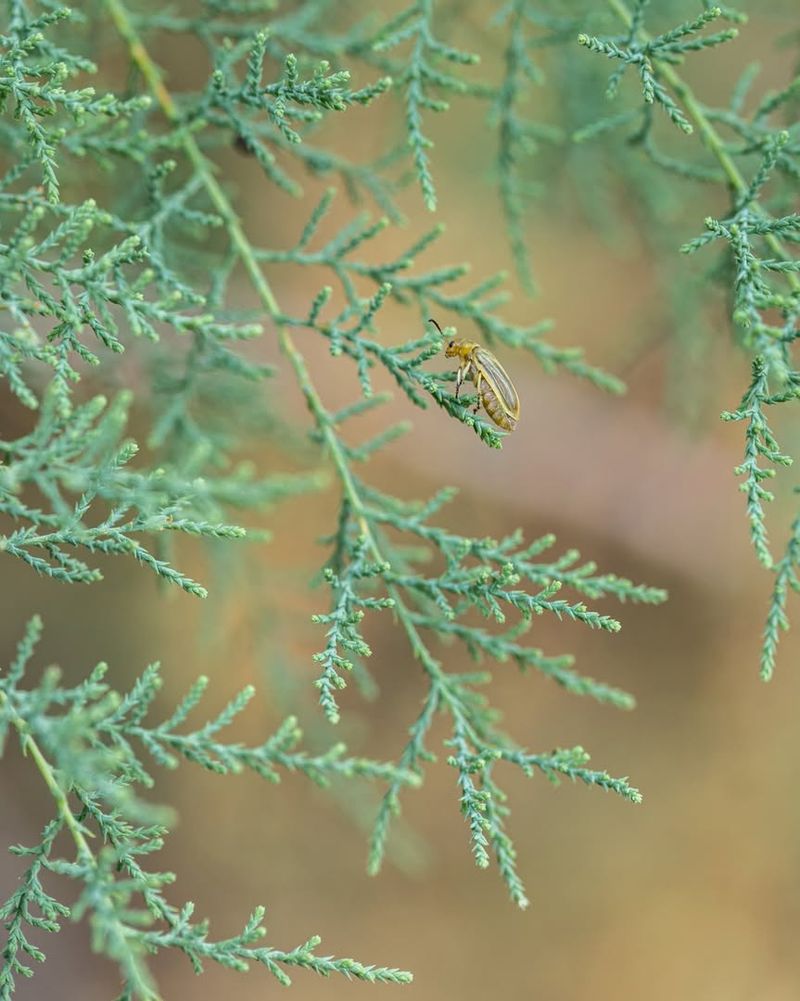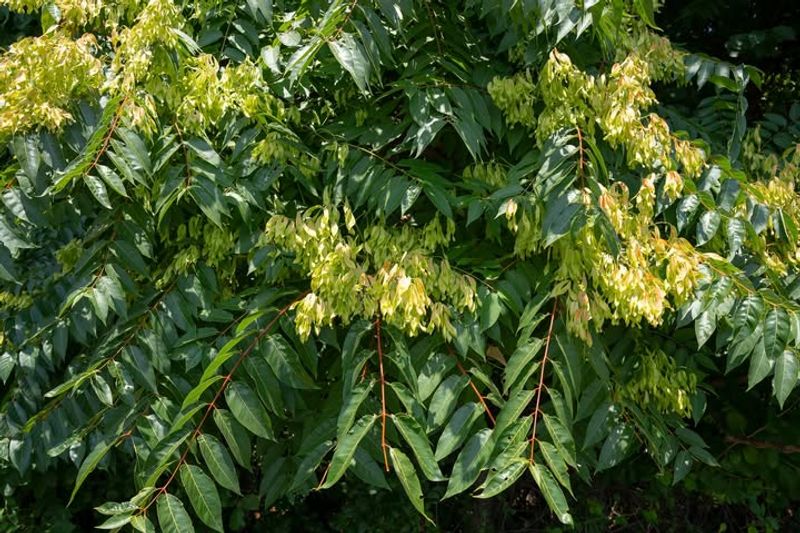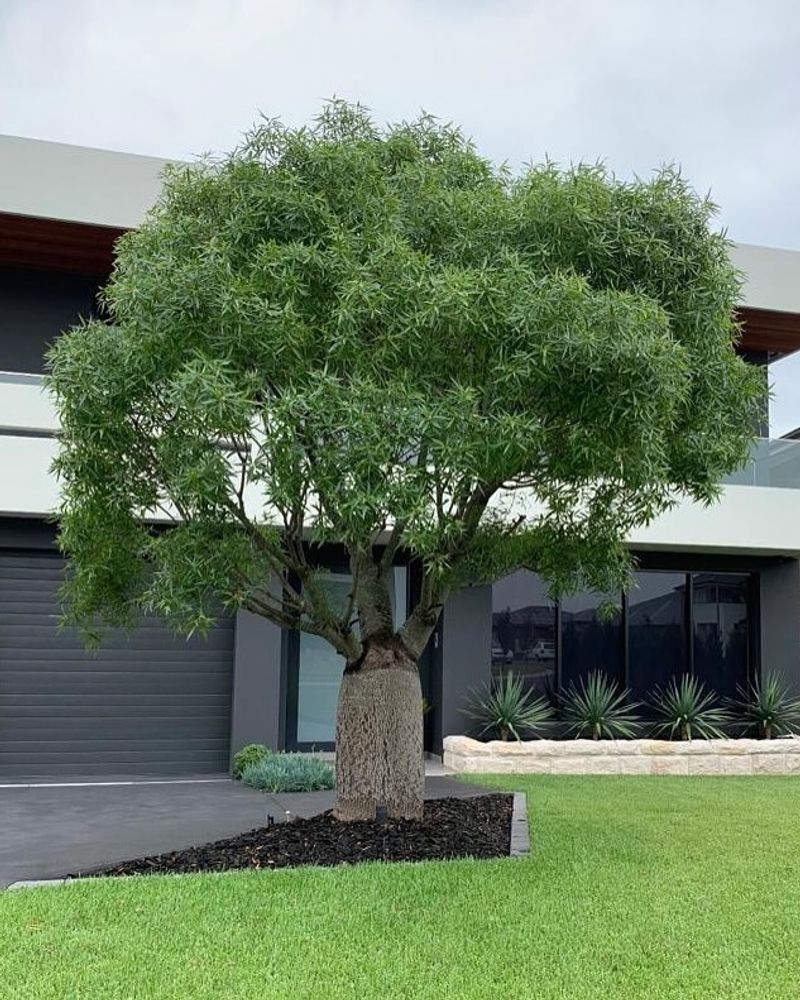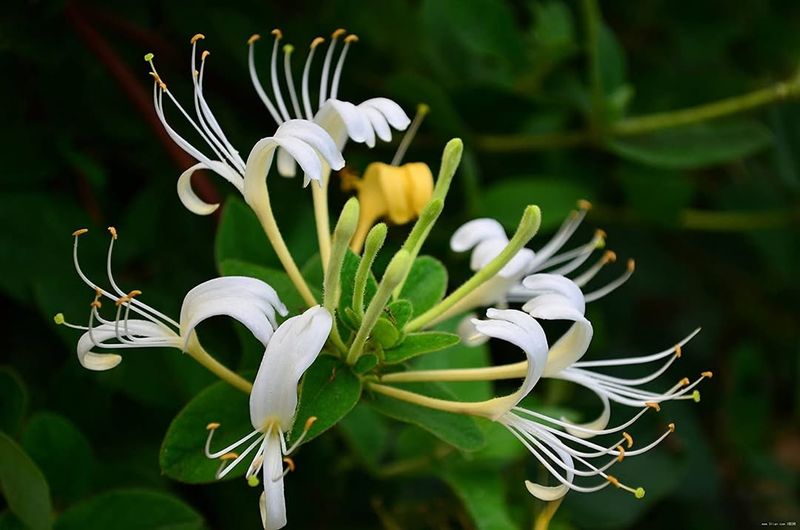Arizona gardens are beautiful, but some popular plants are causing serious problems for our desert ecosystem. Certain species spread aggressively, choking out native plants and using precious water resources.
State officials are considering banning several invasive plants to protect Arizona’s unique environment and wildlife habitats.
1. Fountain Grass
With its flowing purple plumes swaying in the breeze, fountain grass might look harmless in your yard. Unfortunately, this ornamental favorite becomes a wildfire hazard when it dries out during hot summers.
Native plants struggle to compete once fountain grass takes over an area. The seeds spread easily through wind and wildlife, allowing it to invade natural desert spaces quickly.
Homeowners should consider native alternatives like deer grass for similar visual appeal without environmental damage.
2. Buffelgrass
Originally brought to Arizona for cattle grazing, buffelgrass has become one of the state’s worst invasive nightmares. It creates thick carpets that fuel devastating wildfires, burning hotter and faster than native vegetation.
Saguaro cacti and other iconic desert plants cannot survive these intense fires. Buffelgrass regrows quickly after burning, creating a dangerous cycle that transforms deserts into grasslands.
Removal requires persistent effort since roots can regenerate new plants surprisingly fast.
3. Tamarisk (Salt Cedar)
Along Arizona’s rivers and streams, tamarisk trees drink water like there’s no tomorrow. A single tree can consume 200 gallons daily, leaving little for native cottonwoods and willows.
Birds and wildlife lose critical habitat when tamarisk takes over riparian areas. The tree’s tiny pink flowers might seem pretty, but they produce thousands of seeds that spread rapidly downstream.
Salt deposits left by tamarisk roots make soil inhospitable for other plants trying to grow.
4. Russian Olive
Don’t let the silvery leaves fool you—Russian olive aggressively invades wetlands and water sources throughout Arizona. Thorny branches create impenetrable thickets that block access to streams and rivers.
Wildlife finds little value in Russian olive compared to native trees. The trees fix nitrogen in soil, altering natural nutrient balances that native plants depend upon.
Removing established Russian olive requires cutting trees and treating stumps to prevent regrowth from roots.
5. Tree of Heaven
Growing up to six feet annually, tree of heaven lives up to its name by towering over everything nearby. Roots release chemicals that poison surrounding plants, creating bare zones underneath its canopy.
Broken roots sprout new trees, making removal frustratingly difficult for property owners. The tree attracts spotted lanternfly, an invasive pest threatening agriculture across America.
Despite pretty compound leaves, this aggressive spreader damages sidewalks, foundations, and sewer lines with powerful roots.
6. African Sumac
Landscapers once praised African sumac for providing quick shade in Arizona yards. However, shallow roots invade irrigation systems and crack concrete patios with alarming regularity.
Seeds germinate easily wherever they land, creating unwanted seedlings throughout neighborhoods. Pollen from male trees triggers severe allergic reactions in sensitive individuals during spring months.
Native mesquite or palo verde trees offer better alternatives for desert landscaping without the maintenance headaches and allergies.
7. Giant Reed
Resembling bamboo, giant reed shoots up to 20 feet tall, forming dense colonies along waterways. Its massive size blocks sunlight from reaching native plants below.
Roots stabilize riverbanks poorly despite the plant’s height, increasing erosion during floods. Giant reed provides terrible wildlife habitat compared to native willows and cottonwoods it replaces.
Stems break easily during storms, creating debris that clogs drainage channels and causes flooding problems in urban areas downstream.
8. Saharan Mustard
Covering desert floors with cheerful yellow blooms, Saharan mustard seems innocent until you realize it’s stealing water from native wildflowers. A single plant produces thousands of seeds that remain viable for years.
Desert tortoises suffer when mustard replaces native plants they depend upon for food. The invasive grows quickly after winter rains, beating native species to precious moisture.
Hand-pulling before flowering prevents seed spread, but timing matters since roots break easily when soil dries.
9. Castor Bean
The castor bean plant, known for its glossy leaves and vibrant seeds, can be deceptively charming. Yet, its rapid growth and toxic seeds make it a menace to native flora in Arizona.
This plant thrives in various conditions, allowing it to outcompete local species. Its seeds contain ricin, a potent toxin, posing risks to both wildlife and humans.
Visible along roadsides and waterways, the castor bean plant spreads easily through its seed dispersal. Its resilience and adaptability make it a challenging invader in the region.
10. Japanese Honeysuckle
Japanese honeysuckle enchants with its sweet aroma and delicate blooms of white and yellow. However, beneath its beauty lies an aggressive nature that threatens Arizona’s native plants.
Climbing and sprawling, it easily overtakes trees and shrubs, smothering them under dense foliage. This invasive vine thrives in both sun and shade, making it versatile and difficult to control.
Its ability to root at multiple points allows it to spread rapidly. This characteristic makes it particularly dangerous to local biodiversity, often leading to habitat loss.
11. Vinca (Periwinkle)
Vinca, or periwinkle, is often admired for its glossy leaves and star-shaped blooms. However, in Arizona, it transforms from garden beauty to invasive foe.
This ground cover spreads quickly, forming dense mats that choke out native plants. Its tenacity is unmatched, thriving in a range of soil types and light conditions.
Once established, vinca is tough to remove, often requiring persistent effort. Its invasiveness can lead to significant ecological disruption, outcompeting local species for resources.
12. Tree Tobacco
Tree tobacco, with its tubular yellow flowers, stands out in the Arizonan landscape. Despite its striking appearance, it poses serious ecological threats.
This plant can grow rapidly, forming dense thickets that outcompete native vegetation. It thrives in disturbed areas and can easily spread through seed dispersal.
Beyond its invasiveness, tree tobacco is toxic to livestock and wildlife. Its presence in Arizona represents a growing challenge for conservation efforts, necessitating careful management.













